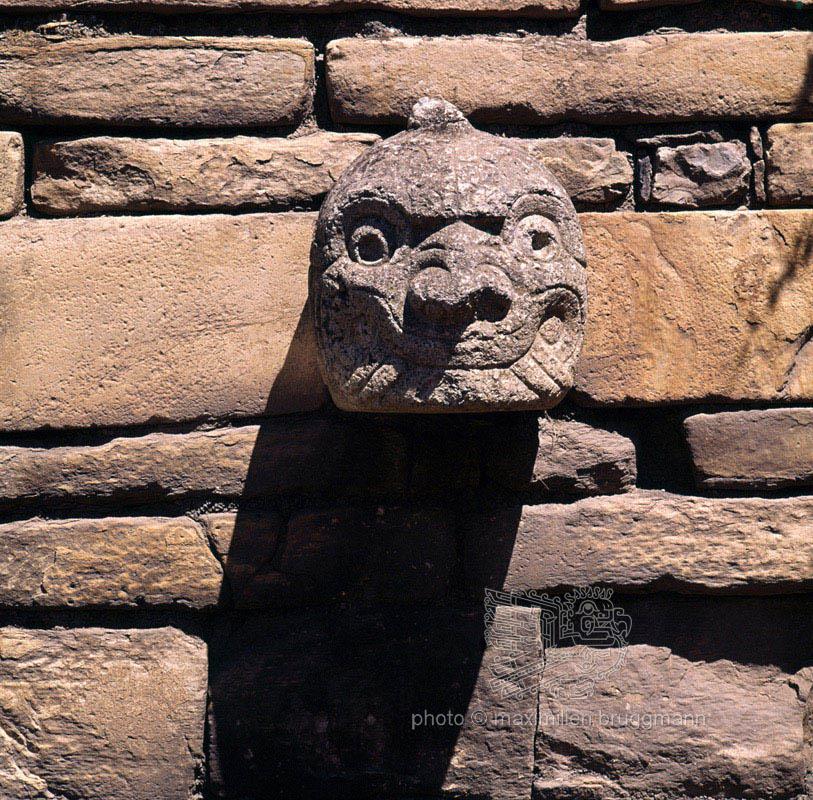Description
The heads of nails (Cabezas clavas) are a series of sculptures representing heads of cats, snakes and birds, combined with human features. They owe this name to the fact that they end like a nail in an extension, which meant that they could easily be embedded into the façade of the temple at symmetrical intervals. One theory assumes that they were the guardians of the temple. They were carved in sandstone of different consistency, quartzite and granite. Unfortunately, of the 56 who were there, only one is still on site. The others have disappeared or are kept in museums. - 1976





